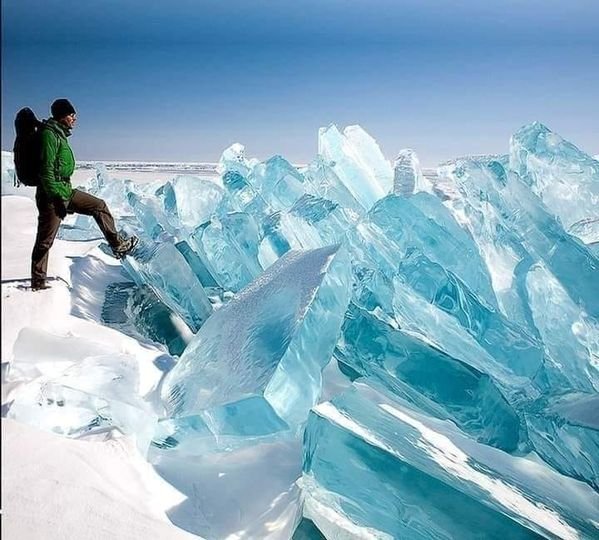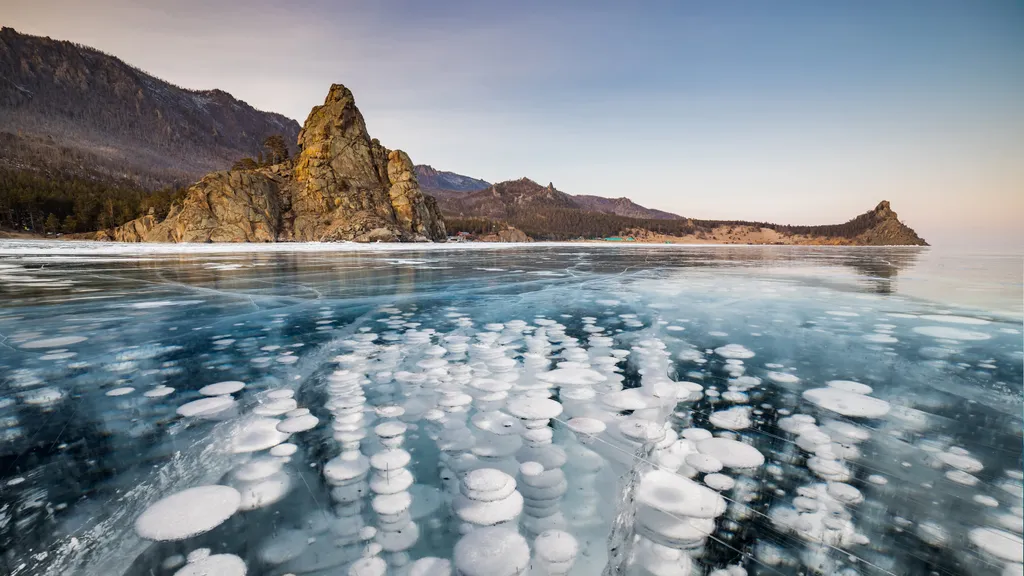Nestled in the rugged terrain of eastern Siberia, Russia, Lake Baikal stands as a testament to the awe-inspiring power of nature. With its unmatched history, depth, and ecological significance, this ancient freshwater lake captivates scientists and travelers alike. Often referred to as the “Pearl of Siberia,” Lake Baikal is not just a lake; it is a living monument to Earth’s geological and biological diversity.

Ancient Origins and Geological Significance
Lake Baikal is the oldest freshwater lake in the world, estimated to be 20 to 25 million years old. Unlike most lakes, which eventually fill with sediment and disappear over time, Baikal continues to thrive thanks to tectonic activity. It is situated in a rift valley, where the Earth’s crust is slowly pulling apart. This geological feature contributes to the lake’s incredible depth, making it the deepest freshwater lake on the planet, plunging to 1,610 meters (5,315 feet) at its lowest point.
Baikal’s immense depth and geological activity suggest it is still “growing,” with the rift widening slightly each year. This phenomenon makes it a valuable site for studying tectonic processes and the Earth’s history.

The Largest Reservoir of Freshwater
Containing around 20% of the world’s unfrozen freshwater supply, Lake Baikal is a critical resource for the planet. Its volume—approximately 23,000 cubic kilometers (5,660 cubic miles)—is greater than that of all the Great Lakes of North America combined. The purity of its water is equally remarkable, with its unique ecosystem playing a significant role in natural filtration.
In the lake’s pristine waters, visibility extends to an impressive depth of 40 meters (131 feet), showcasing its exceptional clarity. This transparency is largely due to the presence of microscopic organisms that filter out impurities, maintaining the lake’s ecological balance.
Unique Winter Beauty
Lake Baikal transforms into a magical wonderland during the winter months. As temperatures plummet, the lake’s surface freezes into thick sheets of ice. Strong Siberian winds sculpt the ice into stunning turquoise formations, some reaching heights of 12 meters (39 feet). The frozen surface often cracks under the pressure of shifting ice, creating mesmerizing patterns that add to its allure.
These dramatic bursts of turquoise ice have made Lake Baikal a sought-after destination for photographers and adventurers. The frozen lake becomes a natural highway for vehicles and tourists exploring its icy expanse.
Biodiversity and Endemic Species
Lake Baikal is often referred to as the “Galapagos of Russia” due to its extraordinary biodiversity. The lake is home to more than 3,700 plant and animal species, with nearly 80% found nowhere else on Earth. The most iconic resident of Baikal is the Baikal seal (nerpa), the only freshwater seal species in the world.
Additionally, the lake is a haven for unique fish species like the omul and the golomyanka, both of which are crucial to the local ecosystem. The surrounding forests and wetlands are equally rich in wildlife, providing a habitat for bears, lynxes, and various bird species.

Cultural and Spiritual Significance
Lake Baikal holds a deep cultural and spiritual significance for the local Buryat people, who regard it as sacred. Legends and myths abound, portraying the lake as a powerful and protective entity. For centuries, Baikal has been a source of inspiration for poets, artists, and explorers.
Its shores are dotted with small villages, monasteries, and natural hot springs, making it a serene retreat for those seeking solitude and connection with nature. The Trans-Siberian Railway, which skirts the lake’s southern edge, offers breathtaking views of Baikal’s stunning landscapes.
Threats and Conservation Efforts
Despite its pristine appearance, Lake Baikal faces modern challenges. Pollution from industrial activities, climate change, and tourism have raised concerns about its fragile ecosystem. Invasive species and algae blooms threaten the balance of its unique flora and fauna.
To combat these issues, local and international organizations are working to preserve Lake Baikal. Efforts include stricter regulations on pollution, sustainable tourism initiatives, and research aimed at understanding and mitigating the impacts of climate change.

Conclusion
Lake Baikal is more than just a natural landmark; it is a symbol of Earth’s resilience and beauty. Its ancient origins, staggering depth, and ecological significance make it one of the most extraordinary freshwater lakes in the world. Whether admired for its stunning winter ice formations, its unparalleled biodiversity, or its cultural legacy, Lake Baikal continues to inspire wonder and respect. Protecting this natural treasure is a responsibility shared by all who cherish the planet’s unique heritage.